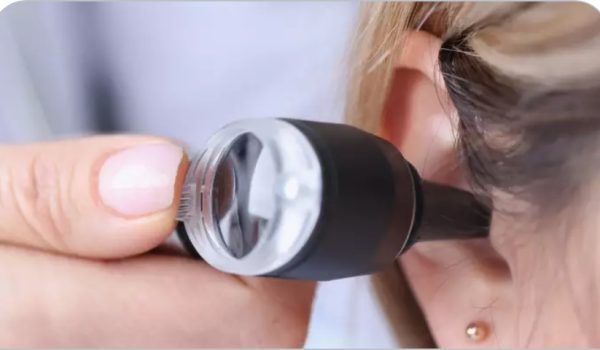You don’t have to be a swimmer to get swimmer’s ear!
Also known as otitis externa, swimmer’s ear is a common condition that affects the ear canal – the bit that connects the outside of the ear (the pinna) to the ear drum.
It’s often caused by frequent exposure to water, hence the term swimmer’s ear’.
It can also be caused by residue water from having a shower or a bath or the moisture of being in a humid environment – and there are other causes too.
Let’s take a deep dive into the condition to find out more about why it can happen and what you can do to lessen the chances of getting it, particularly if you’re partial to pool, wild or open water swimming.

What is swimmer’s ear?
Swimmer’s ear is an infection of the outer ear and causes inflammation of the ear canal.
It’s a common condition in both children and adults and it tends to clear up within a few days after treatment.
Symptoms include:
- Earache
- Itching and irritation
- Redness and swelling
- A pus-like or watery discharge
- A temperature
- Tenderness when you move your jaw or ear
- Hearing loss
- Swollen and sore glands in the throat
Occasionally it can last for several weeks or longer and if your symptoms include a temperature, severe pain, a lot of discharge and swollen glands, you should seek medical attention straight away for appropriate swimmer’s ear treatment.
Speak to your GP if you experience recurring swimmer’s ear and treatment isn’t working.
What causes swimmer’s ear?
Swimmer’s ear is caused by an irritant in the ear canal.
Most commonly it’s caused by trapped water or moisture but skin conditions such as eczema or psoriasis can also lead to an infection.
A combination of the narrowness of the ear canal, the thin skin which lines it and the warm conditions within it make it particularly susceptible to infection and it can be the perfect breeding ground for fungus and bacteria to thrive.
It’s also thought the regular use of earbuds and hearing aids may in-directly lead to outer ear infections by trapping moisture in the ear canal. Keeping both devices clean can help to reduce the risk of bacteria.
Swimming, bathing, or exposure to humid environments can trap water in the ear, creating a breeding ground for bacteria.
If you’re a regular or competitive pool swimmer long periods in chlorinated water can make you more susceptible to inflammation.
Excessive ear wax can trap moisture and debris in the ear canal which can lead to an infection. But earwax is also there to protect the ear canal, so seek healthcare professional advice on ear wax removal.
Why EarCalm?
For the treatment of minor infections of the outer ear
Find your nearest stockist of EarCalm Spray




